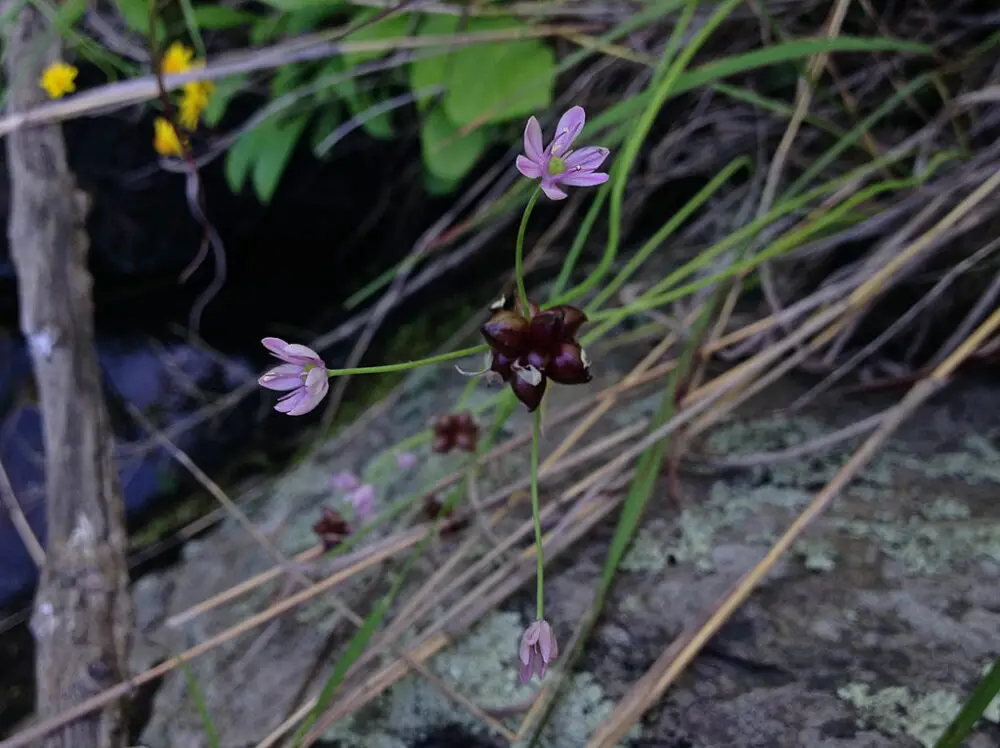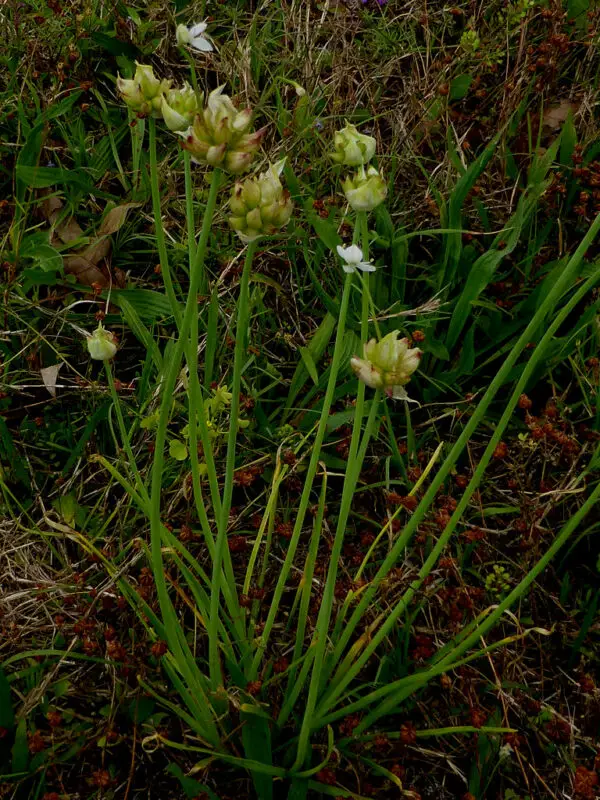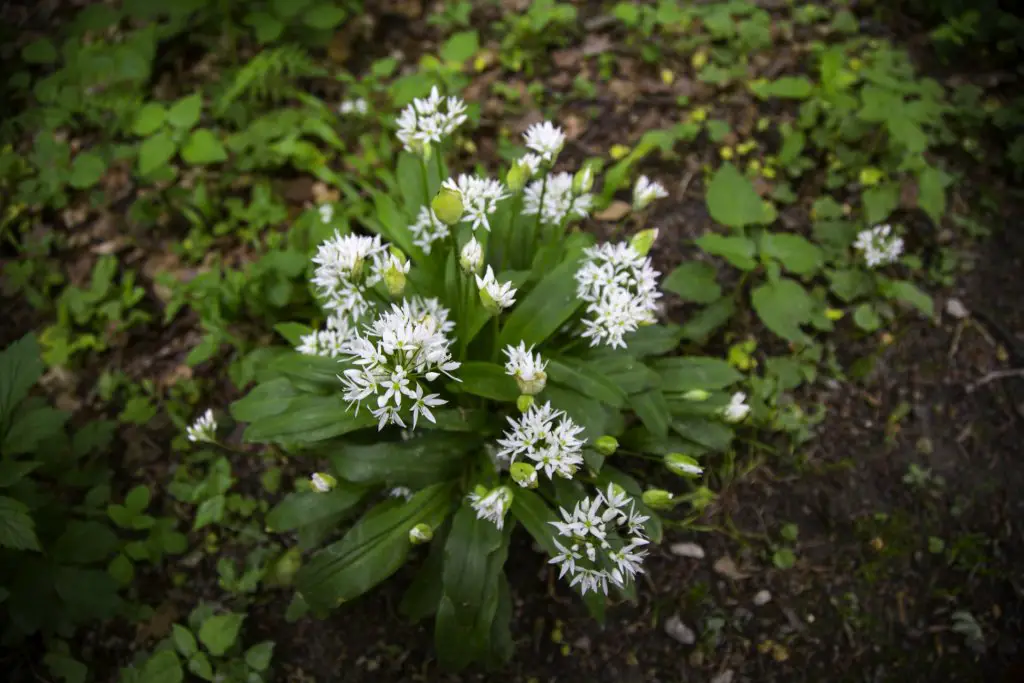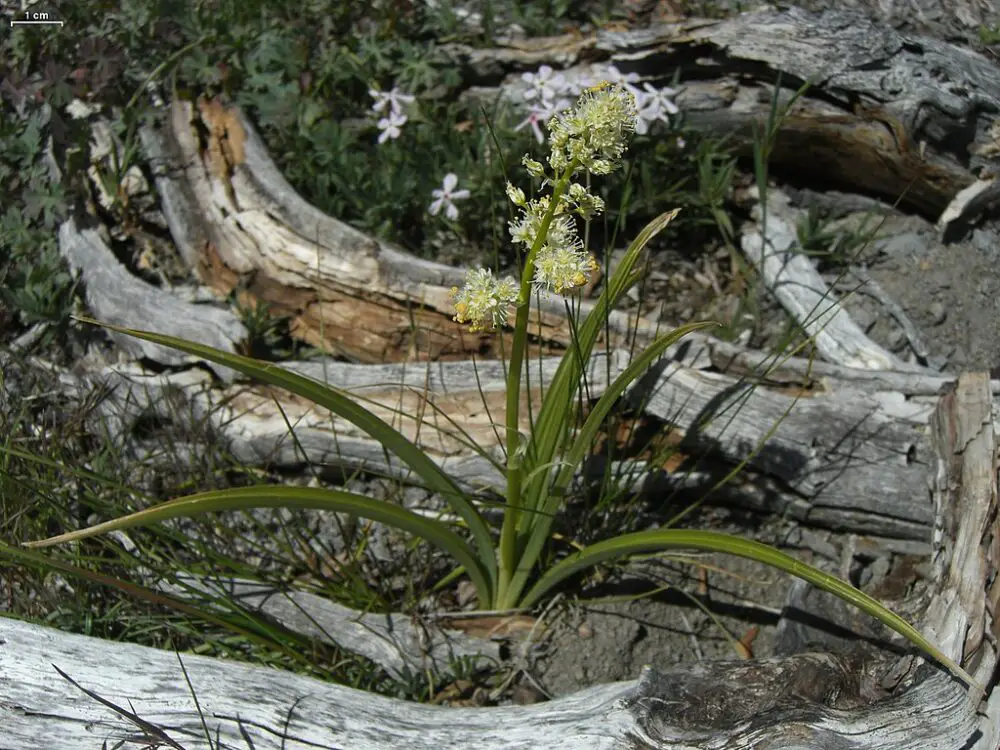The wild onion plant is a perennial broadleaf weed that grows from underground bulbs and smells of onion or garlic in the spring and summer. The lower stalk is mostly white. Multiple stems branch toward the top and are darker green at the tip. The bulb is round and white. Wild onions will be topped with pinkish-white flowers in the spring.
| Scientific name | Allium canadense |
| Family | Amaryllidaceae (lily) |
| Plant type | Perennial |
| Kingdom | Plantae |
| Genus | Allium |
Common names include:
- Meadow garlic
- Tree onion
- Wild garlic
- Canadian garlic
- Ramps
How to identify wild onions
Wild onions have an appearance similar to tall grass. This bulb-forming perennial has slender, distinctly erect stems that are generally slightly stiffer than the onions growing in your garden.
In addition to reproducing underground, they also produce aerial bulblets and seedlings.
What Are You Foraging For Right Now?
We're thrilled to hear your ideas. What would you like to submit today? Feel free to share your thoughts and experiences with us.
Its flowers grow in umbels (all flowers form a cluster at the top of the stalk) that are held upright during flowering (not drooping). It blooms from July to November.
Smell: Look for a distinctive, onion-like odor. This characteristic is unique to the plant. Do not eat anything that does not have that oniony-garlicky aroma.
Leaf shape: The leaf will resemble a blade of grass with a slightly curved u shape. The leaf may be wild garlic if it is hollow and tubelike.
It should be noted that both of these plants are edible, but there are toxic lookalikes as well, so do not judge a plant solely by its leaves.
Bulb: Ensure that it grows from a bulb. There are two types of bulbs: a round, small bulb and a long, stem-like bulb (such as a scallion).
Flowers: When the plant is in flower, the flowers will be white with six petals. A pale purple flower may also indicate wild garlic.
Watch our video to learn all about how to find, forage, and identify wild onion!
What part of wild onions is edible?
The entire plant can be consumed. Despite the fact that the flower’s stem is somewhat tough and woody, the bulb, stem, and flower are all edible.
Wild onions and garlic can be enjoyed in both their raw and cooked forms.

Are wild onions the same as chives?
Not exactly, however, there is a lot of overlap between the two. They can both be used as scallions, scallion tops, onion tops, garlic tops and chives.
A simple way to distinguish wild chives from similar plants is to examine their bulbs. Unlike other Allium varieties that produce small bulbs and have a space between flowers, chives do not produce a bulb. Garlic chives smell of garlic, while wild chives smell of onions.

What’s the difference between wild onions and green onions?
The green onion is an immature type of Allium species that is grown in close proximity to each other and harvested before the bulbs begin to swell.
While some people consume the flowers and roots of green onions, most consume only the tubular, dark green shoots and white-to-pale green bulb stalks.
Wild onions vs. wild garlic
Wild onion and wild garlic are very similar, however: wild garlic tops are smaller and have smaller pods containing bullets.
Wild onion stems are shorter than that of wild garlic. When peeled, the onion bulb will have layers, while garlic will have cloves.
Finally, wild onion leaves resemble a blade of grass with a slightly curved u shape. Wild garlic has hollow and tubelike leaves.

Where do wild onions grow?
An early spring flowering perennial, Allium canadense, the Canada onion, Canadian garlic, meadow garlic, and wild onion are native to eastern North America, ranging from Texas to Florida to New Brunswick to Montana.
Originally from Europe, this plant is most commonly found in the eastern region of the United States and the western region of the Pacific Northwest.
Ohio may be the state where wild onions are most prevalent.
Wild onion poisonous lookalikes
Wild onions are edible wild plants and are not poisonous. However, some poisonous plants resemble wild onions and are extremely toxic.
Toxicoscordion venenosum, or death camas, is not the same as wild onions. This mistake could have very serious consequences. In addition to being poisonous to humans, it is also harmful to livestock.
Death camas have a leaf that appears more grasslike and dry than succulent or tender.
The leaves of death camas are v-shaped with a long bend in the middle, whereas those of wild onions are more curved and U-shaped.
Wild onions will always have an oniony smell and taste, no matter how mild or strong they are.

How do you prepare wild onions to eat?
Whenever you want a little onion flavor, you can use wild onions in any recipe that calls for onions, scallions, shallots, chives, leeks, or garlic.
It is not necessary to cook them; you can chop them up and use them as a salad garnish, as a soup garnish, and are good for pickling.
Foraging for Wild Onions
It is not advisable to just grab the stems and pull them like weeds, otherwise, you may tear the stems and lose the edible bulbs.
Instead, use a spade or shovel to dig around the bulbs and lift them from the ground. Wild onions’ bulbs may be buried several inches below the surface, while others may be buried more shallowly, so dig deeply at first to discover how far down the bulbs are.
Ana has always been interested in all things nature and flora. With her expertise in home gardening and interest in foraging, she has been spending her weekends and free time looking for edible native plants, flowers, and fungi. One of her many hobbies includes testing new savory and sweet recipes, juices or teas made from freshly picked plants, wild fruits, or mushrooms.

